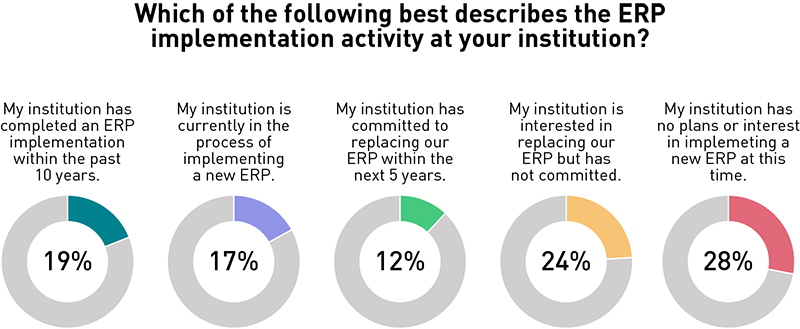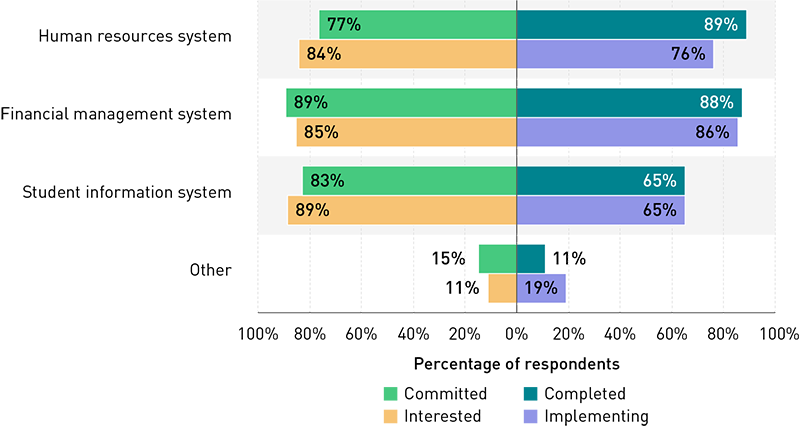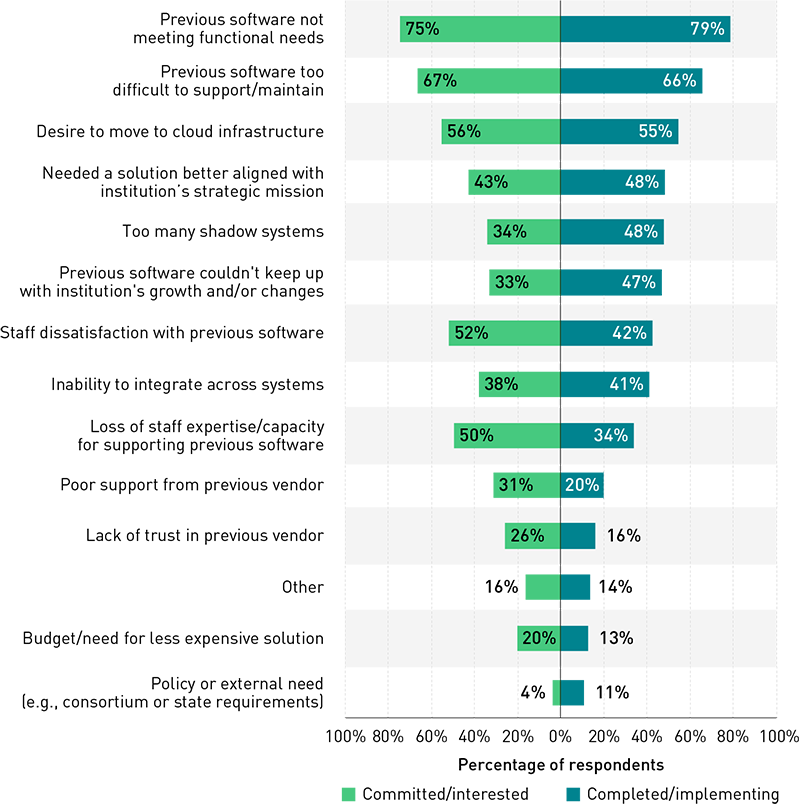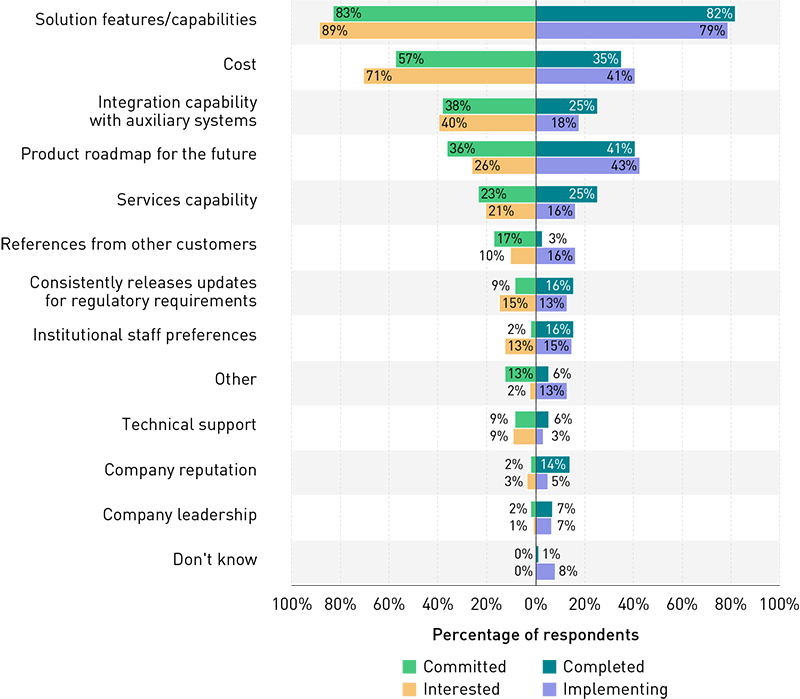Overview of the Current State of ERP Implementations
For this study, we collected survey data from 368 individuals across various institutional types and sizes. Just over a quarter of respondents represented doctoral institutions (27%), with another 18% representing master's institutions, 19% representing bachelor's institutions, 12% representing associate's, and 7% representing "other" institutions. The remaining 17% of respondents represented institutions outside the United States.
Respondents were fairly evenly distributed in their ERP implementation status between those who have recently completed an ERP implementation (19%), are currently implementing an ERP (17%), are committed to replacing their ERP (12%), are interested in replacing their ERP but not committed (24%), or have no plans for replacing their ERP (28%) (see figure 1). In addition to these survey data, interviews were conducted with 21 respondents from 19 institutions to gather deeper insights into the results of the survey.

ERP implementations vary across system areas. Among the respondents who have completed or are currently implementing an ERP, HR/HCM and financial management are the most common systems undergoing change (see figure 2). But for those who identified as "currently committed" to or "interested in replacing" an ERP system, implementations are more likely to include student information systems (SIS) as well as HR and financial management systems, which may indicate increased readiness to tackle the complex nature of SIS replacement or more trust in the maturity of newly developed SISs. Respondents who specified implementations of "other" systems had a few common areas of focus, including advancement, research, procurement, and identity and access management.

Implementation drivers include functionality, cloud systems, integrations, mobile access, and reporting. Many factors can lead institutions to adopt a new ERP system. For our respondents, "improved functionality over current systems" was the most common driver (see figure 3). Issues with legacy systems, such as cost, functionality, integration, reporting, and user experience, were also motivating factors. ERP vendors are now offering cloud-based solutions to address these issues, providing additional functionality, standardized business processes, and the ability to shift costs from on-site technology and maintenance to development and user support.

Respondents also prioritized the need for integration with other systems, such as learning management systems (LMS), customer relationship management (CRM) systems, and reporting tools. Integration is becoming more important as colleges and universities seek to create a more efficient, data-centric technology ecosystem that enables data-informed decision-making, and respondents focused on the benefits of ERP systems in breaking down data silos and providing leadership with a holistic, institution-wide view of operations.
Respondents who selected "other" indicated that their current system's end of life, age, and the desire for a better user interface were motivating factors in their decision to implement a new ERP.
Of the top three factors that will be most important in the selection of a new ERP vendor (figure 4), solution features/capabilities was the highest concern for all groups. Cost was a more important concern for interested respondents than for those in any of the other groups (see the section on Budgets, Costs, and Resources below). Future product roadmap and integration capabilities were also important across all groups.

The focus of this report is both to capture a series of ERP implementation lessons learned and to be a resource to those institutions looking toward a new ERP in the future. Additionally, it is worthwhile to note that the respondents who stated they are not interested in moving systems were doing so primarily for three reasons:
- Cost
- Resources and time
- Lack of mature SIS options